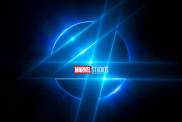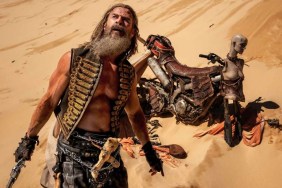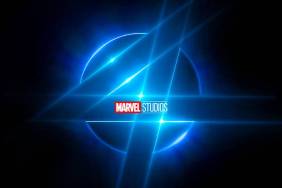Pixar is back and it’s taking superhero movies to a whole new level on November 5th, when Walt Disney Pictures will distribute its latest CG-animated action adventure, The Incredibles. Acclaimed “The Iron Giant” director Brad Bird both wrote and helmed the new film from the creators of “Toy Story,” “Monsters, Inc.,” and “Finding Nemo”.
In The Incredibles, Bob Parr used to be one of the world’s greatest superheroes (known to all as “Mr. Incredible”), saving lives and fighting evil on a daily basis. But now fifteen years later, Bob and his wife (a famous superhero in her own right) have adopted civilian identities and retreated to the suburbs to live normal lives with their three kids. Now he’s a clock-punching insurance claims adjuster fighting boredom and a bulging waistline. Itching to get back into action, Bob gets his chance when a mysterious communication summons him to a remote island for a top-secret assignment.
ComingSoon.net got a chance to talk to Brad Bird about creating the anticipated movie.
Brad Bird on transformation from 2D to CGI:
It was not as difficult as – I mean, you definitely had to learn the world and it’s a, the technology is really amazing, but it’s also on the edge of failing a lot of times. You know, it’s kinda like an old TV set versus a really advanced digital one. If the signal is bad on an old TV set, you get a little bit of snow, you know, maybe the image rolls a little bit. But it’s still the image; you can still understand what it is. If the digital thing gets its signal broken, people start smearing and turning purple and going into, like you’ve dropped acid or something. So that’s kinda like what this system is like; when it goes south really weird things happen. If a zero, if a decimal point isn’t in the right place, really bizarre stuff happens. There was one frame of one scene where Helen was in the tunnel, we’re watching it and there’s this little flash. And I said “What was that flash? Can we go back?” So we go back one frame at a time and we find one frame where there’s this white streak that goes all the way off- screen up to her face; one frame. And I said “What is that?” And so one of the computer guys went into it and analyzed it; it turns out it was one of her teeth shooting out of her head at Mach 5. So that’s the kinda stuff that happens in CG and that’s weird. That said, I think people focus too much on the technique of animation and I think what’s the most important areas to a film’s success are the same as a live action film. Do we understand the characters? Do we empathize with them? Do we follow them? Is the plot surprising and logical? If we don’t do those jobs, we won’t have a good film no matter what the technology is. I think what makes a good animated film is what makes a good live action film; I think its all film. I think people in animation spend too much time. With hand-drawn, I think they said, if you laid each drawing end to end and it would go to Mars and back, three times. And it was like, yeah, but that’s not the point. You could have a million drawings that don’t make you feel anything or you could have 20 drawings that capture feelings beautifully. But people get obsessed with the numbers of things.

Brad Bird on classical animation’s demise:
I think the present stupidity says that it’s defunct and it will be short lived. I’m talking about a lot of people in the press and I don’t think Disney is stopping doing hand-drawn stuff. There still doing stuff on DVD; they are still producing a lot of hand-drawn stuff. You know, they did Teacher’s Pet and they did a lot of small budget stuff as well. I think that it’s easy to blame a film’s failures on technique because if the remedy is buying a computer, everyone can buy a computer and get out of trouble. Their problems are solved. Well, I think they are going to find that your problems are not solved by going to a computer and if you have that idea that a computer isn’t going to make it better. So I think a lot of CG films are going to come out because Hollywood loves to overdo anything that succeeds. I think that some of them will be good and a lot of them won’t. And when a lot of them start to fail, the inevitable headline will be, “Audience losing interest in CG films.” No, they won’t be because they weren’t interested in the technology. They are interested in characters, premise and they are interested in being taken somewhere. And if a film takes them somewhere they want to go, no matter if it’s Pixels or drawings or puppets or clay.
Brad Bird on why he decided to make a CG film:
I happen to like CG and there’s advantages to CG that are wonderful. But there are also advantages to 2D. I don’t think Nick Park’s films would be improved at all by being in CG. I think Nick Park’s work is beautiful and perfect working in clay. I think you should work in any medium you feel you can effectively tell your story in. I like to move the camera and have really subtle, little facial changes that are difficult in hand-drawn. But I also think that there is a graphic quality in hand-drawn that you can’t get any other way; you have to do it drawing style. I think 101 Dalmatians would not be better as a CG film; I don’t think Pinocchio would be better. I think they are perfect the way they are. I hope we can just fast-forward to a time that whatever medium the director wants to use to tell the story in that’s what we have. And I’m hoping that people become open enough to see any style and accept any style and enjoy it.
Brad Bird on how The Incredibles came about:
I actually had the idea for this long before Iron Giant. It was the one I wanted to do next. The difficulties I faced were the difficulties you face any time you make a movie. You’re always trying to make the story be efficient, but your trying not to make it feel rushed. You’re trying to make people have connections with the character and be able to understand and empathize with them. You’re trying to do something that’s surprising, but feels raw and logical. It’s a challenge every single time.
Brad Bird on why he went to Pixar:
I’ve known John (Lasseter) for a while and they had actually been talking to me about coming up and joining Pixar since A Bug’s Life. And I would talk with them and I was always involved in something and they were always doing their thing. So we kept talking and after Iron Giant was done, it seemed like a good time. I pitched this idea to them and they got it immediately and didn’t seek to change it into anything else. They were totally signed on to what the film was and the flavor of that thing. They didn’t try to make me make it more like Toy Story or any one of their other movies. They just said “We want to do all kinds of different films here and this is great, let’s go for it.” And that was really refreshing.

Brad Bird on writing the film:
Andrew Stanton wrote the first few drafts of Finding Nemo and when he got into the directing it, the project was big and complicated so he had a few other writers work with him to facilitate things. I look at every Pixar film as director driven; I think that’s what distinguishes them from other studios – they want original ideas and they want the director to be invested in it. It’s not an assignment at Pixar…The philosophy at Pixar is if you’re deeply passionate and invested in your film you’re going to stay passionate for the two or three or four years that it takes to make them. That’s their philosophy and I feel like I’m just another example of that.
Brad Bird on his personal inspirations in making The Incredible:
This is sort of a gumbo of adventure movies and spy movies and comedies, TV shows and comic book things that I liked as a kid kind of stirred together with my own personal family stuff. Both the family I grew up in and the family I have now with my wife now and son. Its just kind of a gumbo of all that stuff stirred together. It’s supposed to feel like a lot of things and nothing.
Brad Bird on how he came to do the voice of Edna Mole:
We do a temporary soundtrack where we take existing music and kind of cut it together so it represents where we want to go. And we do storyboards and we record people in Pixar, cast within Pixar, people who get into the ballpark of who were looking for. And sometimes those voices stick; Andrew Stanton, the writer/director of Finding Nemo was the voice of Crush and people just liked his voice from the story reel. Joe Ranft, one of the top story editors at Pixar, did Heimlich in Bug’s Life and did the asthmatic penguin, Wheezy in Toy Story 2. Bob Peterson, who’s another top story guy, did Roz in Monsters, Inc. And they tried actresses and they had to kept telling them, “No, make it lower.” And finally, they went look, he’s already doing it, let’s keep it. And that’s what happened…Pixar doesn’t really care about how famous somebody is. It’s more about how right are they about the character.
Brad Bird on the film’s maturity:
It’s a comic book adventure…You’re doing superheroes, things are going to blow up. There were a few moments where we said “Ok, we’re deviating from the norm.” We all held hands and said yeah, we don’t just want to do one kind of movie and I think that parents ought to take the PG seriously and only they know what their kids can see. Some kids were mildly traumatized by Raiders of the Lost Ark and they probably shouldn’t have seen it, but I don’t think you would ever say take all that stuff out of Raiders of the Lost Ark. Raiders is the movie it set out to be.
Brad Bird on his thoughts on animation as a kids genre:
Not The Simpsons. Clearly, that’s a long held bias that I don’t happen to agree with. I can’t name another art form on the face of the Earth that limits its audience by saying that its aimed at one age group. You don’t say, Opera: it’s only aimed at 35-60 year olds. I have people asking me “What’s it like to work in the animation genre?” Well, it’s not a genre; it’s an art form that can do any genre. It’s been limited by people’s perceptions, but I think you can tell any kind of story there is.
Brad Bird on mocking the comic book genre:
I think we have fun with it, but I never intended to wink at the audience. I wanted people to care about these characters and believe this world. I think there is a tendency with some filmmakers to act like their above the material; I think they are limiting what a film can be because they are saying “I don’t really believe any of this and you shouldn’t either. I’m hip to the fact that this is kind of silly.” I wanted to make something that had fun with that world, but was sincere about it. I want people to worry and care about the characters and I don’t think you can do that beyond a certain point, if you are always winking and nudging the audience. I think winking and nudging to a certain extent is patronizing, unless you’re doing an all-out comedy like Young Frankenstein and then wink and nudge away.

Brad Bird on working on The Simpsons:
I thoroughly enjoyed that show in the eight seasons I was involved with it. I think that we did a lot to change people’s perceptions that animation could be for adults and that was ok. I think we had some of the same struggles that you have in feature animation. We tried for two years to get it in the best comedy category, not best animated category cause we were competing against Muppet Babies and Garfield. And we’re going “Come on, man; we’re a comedy.” So, we fought and we fought and finally after a lot of chair throwing, the Academy said “Ok, you’re eligible to be a comedy.” No one nominated us. Now, that was during the height of Seinfeld and you could argue that we weren’t the best comedy, but we sure were in the top 5, and you can’t tell me we weren’t. So I think people are prejudiced against animation and I won’t say another show that I felt we were better…I had a great time with the show. I learned a lot because the writers on that show are so brilliant; we had to move really quickly, so I had to learn about making decisions quickly which helped me a lot in Iron Giant. It also helped me on Incredibles because we had a movie that was very large and we wanted it to be producible and in the same range as any other Pixar film. And the only way we could do that was by planning the daylights of it and not deviating from the plan. Well that’s all stuff you learn from working quickly.
Source: Andrew Weil








